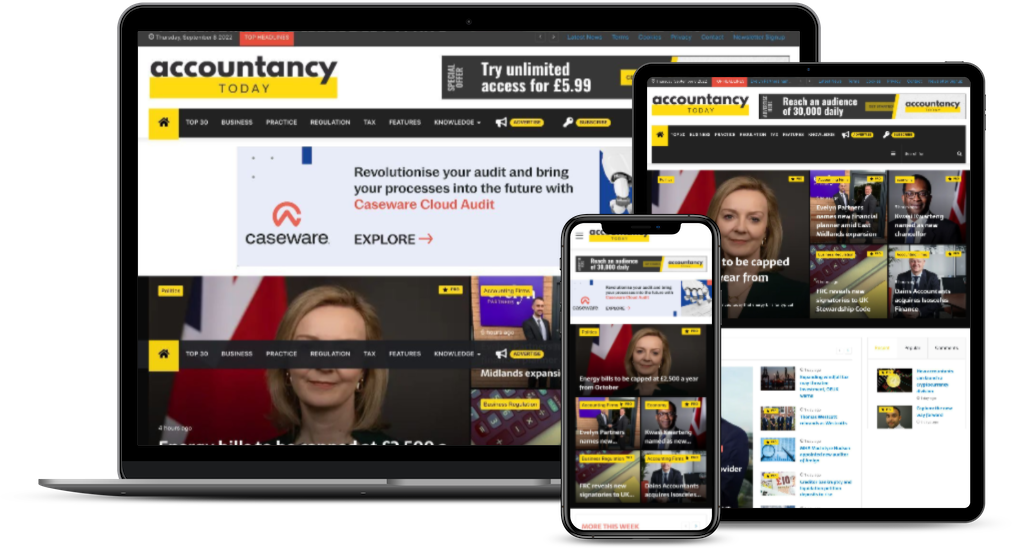
Digital tax processes not only enable data to be gathered centrally and accurately for compliance; but they also add a level of sophistication, enabling this data to be used for in-depth business insight. The key to this is the major industry shift to the cloud, which has implications for how finance can optimise and harness data, argues Russell Gammon, chief solutions officer at Tax Systems.
Complying with HMRC’s Making Tax Digital requirements is nothing new to organisations –
businesses have already adjusted to submitting VAT digitally. And whilst organisations will need to comply with the same for Corporation Tax in the next few years, fundamentally, submitting a CT return is something organisations have had to do for decades.
However, the game changer prompting a shift in the industry are cloud technologies – and these are continuing to gather momentum this year. The rich data sets used by busy corporate tax departments offer a huge opportunity for companies to model data and deliver genuine business insight well beyond the figures plugged into a tax return.
Why the cloud matters
Cloud-based accounting platforms have become increasingly popular in recent years due to their many benefits, such as automation, scalability, and lower total cost of ownership. These systems facilitate seamless collaboration, allowing for effortless transfer of tasks between team members.
Little surprise then that financial professionals are increasingly turning to the cloud, however, the benefits stretch beyond the annual tax return. Based on research conducted with our customers, just a few years ago, 90% of processes were focused on compliance. Whereas now, that figure is more likely to be 75%, with more attention being devoted to insight, analysis and modelling. By moving to the cloud, we can push the compliance figure down to 50%, through automation, centralisation, and implementing real-time data.
Enabling better analysis
Cloud platforms operate on a centralised data repository, which provides a single source of truth, making data easier to analyse. They also enable real-time data, allowing organisations to track and analyse tax-related information as it happens. This can help tax professionals identify potential tax issues and make adjustments early.
However, not only does it bring a new ease to compliance but, by automating important but repetitive tasks, such as tax preparation, filing, and compliance, cloud solutions can save time and reduce errors, allowing tax professionals to focus on higher-level analysis. At the same time, frictionless collaboration across multiple sites helps businesses crunch data across the whole organisation in real time.
What this means in practice is that firms can now gain deeper insights into their data, identify trends and patterns, and make more informed decisions. A CT return is a rich data source and, currently, businesses are not getting everything they can out of it.
For tax planning purposes, it will reveal credits, deductions and potential strategies to minimise liabilities. Analysis and modelling can also assist with risk management, by flagging risks and exposures and developing tactics to mitigate them.
Making the leap
If you are considering migrating to the cloud, find a partner in the tax software industry that can help guide you according to your specific needs. Carefully plan a smooth transition that won’t disrupt the business and will centralise all your vital data, especially ERP data, into one secure, accessible, agile location.
Remember to bring your users on board with the journey, with dedicated training and opportunities to inform how they can best use cloud technologies. With many employees now relieved of many tedious tax processes, they can instead be redeployed as analysts, adding much more value by leveraging the power of the cloud to gain genuine insight into operations.
We have come a long way in thirty years, from painstaking manual paperwork to the tedium of Excel to the brave new world of automation, real time collaboration and deeper analysis. Cloud technology is enabling this shift, using data for insight, not just compliance, thus delivering long term business value. Now is the time to get on board with a cloud partner that understands the complex tax landscape and can provide an end-to-end specialist cloud-based tax solution that will drill into your data and provide the insights necessary to thrive.









